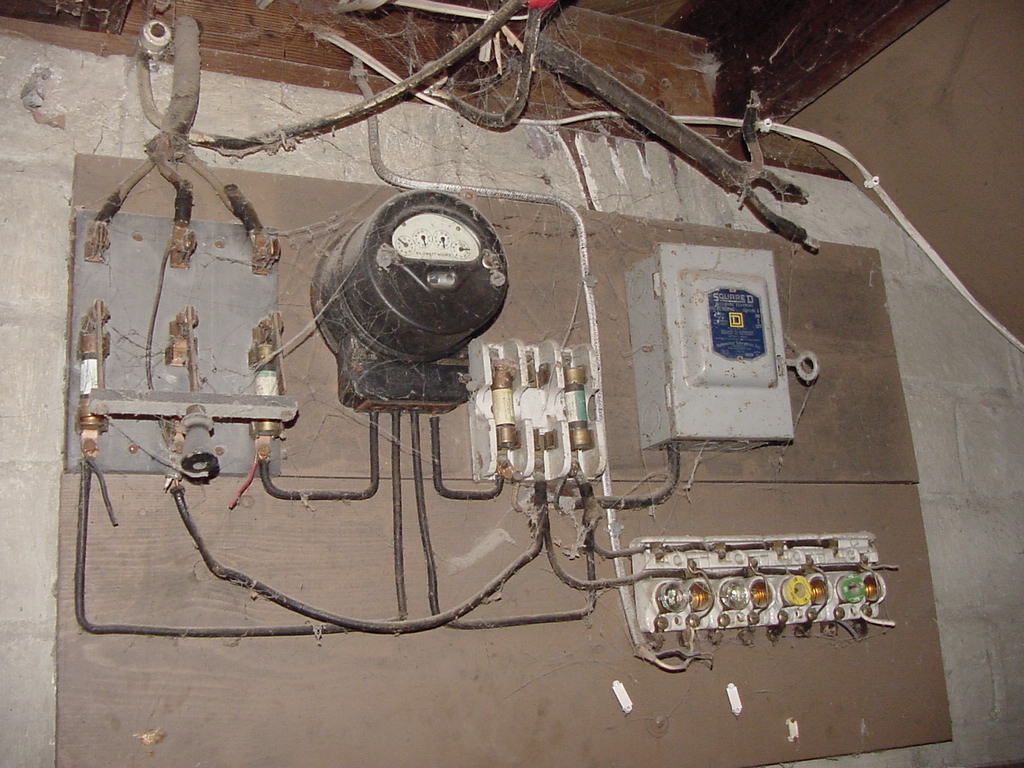mbrooke
Batteries Included
- Location
- United States
- Occupation
- Technician
Why were neutrals fused in the past? Did code mandate it? And why?



How do you know that there was a fuse in the fuse holder and not a solid conductor?
It was very common to have fused neutrals. Many of the services were 30 amp 120 volt. 60 amp 120/240 upgrade came along and the old fuse block was refed or left as it was.
Did they ever fuse the noodle at 120/240? Seems like a bad idea, even for the time.
According to the 1920 National Electrical Safety Code,
"Grounded neutral conductors in three-wire systems shall be arranged without automatic circuit-breakers or fuses interrupting their continuity, unless the circuit breaker opens all conductors of the circuit with one operation.
In two-wire branches from three-wire circuits the conductor connected to the neutral is not for the purpose of this rule considered a grounded conductor."
I think this meant that the neutral could be fused in 2-wire branch circuits.
Apparently they had circuit breakers back then but not for residential applications.
https://books.google.com/books?id=_P...ors%22&f=false
IDR coming across more than two circuits, 4 fuses, in older homes and the open knife switch would have been non fused. The picture you posted would have been found in the business district.
The old carter 3w's switched noodles ,treated like the 'hot'
~RJ~

Is it possible the fused neutral was from an ungrounded DC service they may have had originally?
I guess not with 3 blades
Is it possible the fused neutral was from an ungrounded DC service they may have had originally?
I guess not with 3 blades









